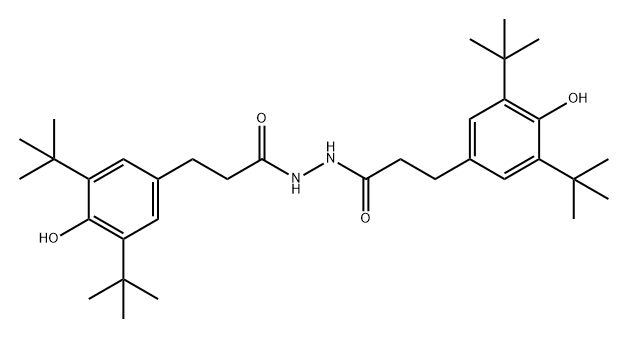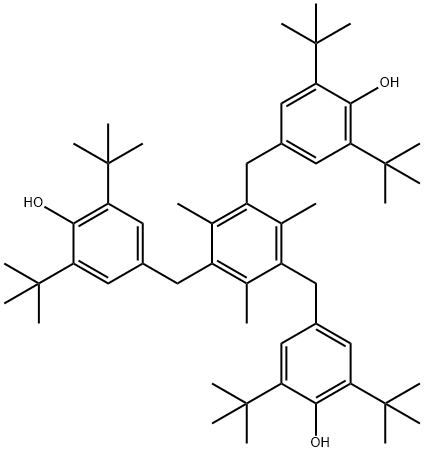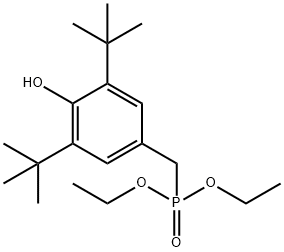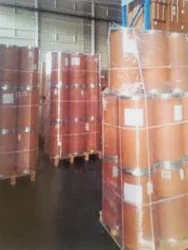antioxidant 1024
- CAS NO.:32687-78-8
- Empirical Formula: C34H52N2O4
- Molecular Weight: 552.79
- MDL number: MFCD00072662
- EINECS: 251-156-3
- SAFETY DATA SHEET (SDS)
- Update Date: 2025-09-18 19:10:02

What is antioxidant 1024?
Description
FDA approve antioxidant 1024 usage in packaging polymers, resins, and adhesives intended for food contact applications. It is approved in many countries for food contact applications.
The Uses of antioxidant 1024
Antioxidant 1024 is used in conjunction with phenolic antioxidants, phosphites/phosphonites, thio-synergists and other co-additives.
What are the applications of Application
Most suited for PA, PE, rubbers and PP applications. More efficient if it is added to the polymeric substance used in insulated electric wire and cable. Also it’s perfect melting nature makes it easily to mix with and into the substance mentioned above and other polymeric substance system without any dispersing problem.
Flammability and Explosibility
Not classified
Synthesis
1. Synthesis steps of β-(3,5-di-tert-butyl-4-hydroxyphenyl) propionyl hydrazide
(1) Dissolve 54 g of hydrazine hydrate in 600 mL of a mixed solution of methanol and ethanol (V methanol: V ethanol = 1:2), then transfer to a dry three-necked flask, and then add 76 g of β-(3, 5-di-tert-butyl-4-hydroxyphenyl) methyl propionate, the three-necked flask is fixed on the iron stand, the ultrasonic time is 10min at room temperature, the intensity is 50KHz, and then the stirrer is placed, and at room temperature , Stir and react for 12h in a nitrogen protected environment, and wait until the reaction liquid is white and viscous;
(2) The white viscous reaction liquid obtained in step (1) is subjected to vacuum distillation. When a large amount of solids are deposited, the vacuum distillation is stopped, and then water is added to the reaction flask and stirred, that is, white crystals are deposited. After suction filtration , Recrystallize with n-hexane to obtain pure β-(3,5-di-tert-butyl-4-hydroxyphenyl) propionyl hydrazide.
2. The synthesis steps of antioxidant 1024
(1) First, add 18 g of anhydrous β-(3,5-di-tert-butyl-4-hydroxyphenyl) propionyl hydrazide, 10 g of ethyl acetoacetate, and 75 mL of dehydrated methanol and toluene into a three-necked flask. Solution (V methanol:V toluene=1:80), then add the rotor, and fix the thermometer, reflux condenser and nitrogen protection device on the three-necked flask;
(2) Place the three-necked flask containing the reactants in step (1) in an oil bath to slowly raise the temperature, and stop the reaction after reacting for 3 hours at 85°C;
(3) Cool the reaction solution of step (2) until crystals are precipitated, and then continue to drop to room temperature until the crystals are completely precipitated, and then perform suction filtration to obtain crystals. Wash the obtained crystals with water 3 times, and then use 5% hydrochloric acid Rinse, finally wash with water to neutrality, filter, and dry to obtain the final product Antioxidant 1024.
Properties of antioxidant 1024
| Melting point: | 60-67°C |
| Boiling point: | 652.6±55.0 °C(Predicted) |
| Density | 1.054±0.06 g/cm3(Predicted) |
| storage temp. | Refrigerator, under inert atmosphere |
| solubility | Acetonitrile (Slightly), Chloroform (Slightly) |
| form | Solid |
| pka | 11.10±0.50(Predicted) |
| color | White to Off-White |
| CAS DataBase Reference | 32687-78-8(CAS DataBase Reference) |
| EPA Substance Registry System | 1,2-Bis[3,5-bis(tert-butyl)-4-hydroxyhydrocinnamoyl]hydrazide (32687-78-8) |
Safety information for antioxidant 1024
| Signal word | Warning |
| Pictogram(s) |
 Exclamation Mark Irritant GHS07 |
| GHS Hazard Statements |
H317:Sensitisation, Skin H319:Serious eye damage/eye irritation |
| Precautionary Statement Codes |
P280:Wear protective gloves/protective clothing/eye protection/face protection. P305+P351+P338:IF IN EYES: Rinse cautiously with water for several minutes. Remove contact lenses, if present and easy to do. Continuerinsing. |
Computed Descriptors for antioxidant 1024
antioxidant 1024 manufacturer
New Products
Indole Methyl Resin tert-butyl 9-methoxy-3-azaspiro[5.5]undecane-3-carboxylate Boc-His(Boc)-OH 2-CTC Resin 4-Chloro-7-tosy1-7Hpyrrolo[2,3-d]pyrimidine 5,7-Dibromo-1H-indole 2,5-dichloro-N-hydroxy-4,6-dimethylpyridine-3-carboximidamide 2,2-Dimethoxy-7-azaspiro[3.5]nonane hydrochloride 4-chloromethyl-5-methyl-1,3-dioxol-2-one (DMDO-Cl) R-2-BENZYLOXY PROPIONIC ACID 1,1’-CARBONYLDIIMIDAZOLE 1,1’-CARBONYLDI (1,2-4 TRIAZOLE) N-METHYL INDAZOLE-3-CARBOXYLIC ACID 4-((2-hydroxyethyl)thio)benzoic acid 1-(TERT-BUTOXYCARBONYL)-2-PYRROLIDINONE Methyl 6-methylnicotinate 3-Pyridineacrylic acid tert-Butyl carbazate TETRAHYDRO-2H-PYRAN-3-OL 2-((4-morpholinophenylamino) (methylthio) methylene) malononitrile 3-(4-morpholinophenylamino)-5-amino-1H-pyrazole-4-carbonitrile 2,4-dihydroxybenzaldehyde 1,3-Diethyl-1,3-Diphenylurea Methyl 2-methylquinoline-6-carboxylateRelated products of tetrahydrofuran


![Calcium bis[monoethyl(3,5-di-tert-butyl-4-hydroxylbenzyl)phosphonate]](https://img.chemicalbook.in/CAS/GIF/65140-91-2.gif)





You may like
-
![3-(3,5-Di-tert-butyl-4-hydroxyphenyl)-N'-[3-(3,5-di-tert-butyl-4-hydroxyphenyl)propanoyl]propanehydrazide CAS 32687-78-8](https://img.chemicalbook.in//Content/image/CP5.jpg) 3-(3,5-Di-tert-butyl-4-hydroxyphenyl)-N'-[3-(3,5-di-tert-butyl-4-hydroxyphenyl)propanoyl]propanehydrazide CAS 32687-78-8View Details
3-(3,5-Di-tert-butyl-4-hydroxyphenyl)-N'-[3-(3,5-di-tert-butyl-4-hydroxyphenyl)propanoyl]propanehydrazide CAS 32687-78-8View Details
32687-78-8 -
 Antioxidant MD-1024 98% (HPLC) CAS 32687-78-8View Details
Antioxidant MD-1024 98% (HPLC) CAS 32687-78-8View Details
32687-78-8 -
 Antioxidant 1024 CAS 32687-78-8View Details
Antioxidant 1024 CAS 32687-78-8View Details
32687-78-8 -
 Pyridine 99.5% HPLC /UV SpectroscopyView Details
Pyridine 99.5% HPLC /UV SpectroscopyView Details
110-86-1 -
 Piperazine Spot supply, best priceView Details
Piperazine Spot supply, best priceView Details
110-85-0 -
 Dibutyl PhthalateView Details
Dibutyl PhthalateView Details
84-74-2 -
 Imidazole Spot supply, competitive priceView Details
Imidazole Spot supply, competitive priceView Details
288-32-4 -
 Thiourea 99% ARView Details
Thiourea 99% ARView Details
62-56-6
